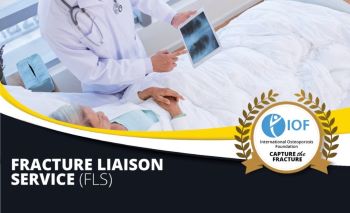Fracture Liaison Services and the Capture the Fracture Best Practice Framework highlighted by the Iran Osteoporosis National Research Network

In the general meeting of the Iran Osteoporosis National Research Network, Prof. Bagher Larijani, a member of the IOF Committee of Scientific Advisors, highlighted Fracture Liaison Services (FLS) as an effective model of care to substantially reduce the incidence of secondary fractures in the Iranian Health Care System.
On May 25th, the Iran Osteoporosis National Research Network hosted a meeting which brought together participants from medical universities across the country.
During this meeting, Prof. Bagher Larijani, Head of the Endocrinology and Metabolism Research Institute (EMRI) of the Tehran University of Medical Sciences, highlighted the missed opportunities in osteoporosis and integrated fracture care. He stated that launching a network of knowledge and information in the field of osteoporosis to exchange data and experiences across the country provides a basis for planning and policy making.
Prof. Bagher Larijani then added that organizing, targeting, and laying the groundwork for basic and applied research with organized cooperation among parallel units based on the current situation of osteoporosis in the country is a mission of this national network.
“Individuals who sustain fragility fractures are at high risk of re-fracture,” said Prof. Bagher Larijani, member of IOF Committee of Scientific Advisors.
“However, osteoporosis treatment rates remain low for these patients and a high proportion of at-risk group do not receive the necessary care,” he added.
He introduced the International Osteoporosis Foundation’s (IOF) Capture the Fracture® Best Practice Framework, which provides guidance for Post-Fracture Care Coordination Programs (PFC) such as Fracture Liaison Services (FLS), a specific model of care where a coordinator pro-actively identifies fragility fracture patients on a system-wide basis and determines their fracture risk with the express purpose of facilitating effective osteoporosis treatment for these high-risk patients.
With the aim of improving secondary fracture prevention and implementing PFC/FLS in the country and determining the feasibility and challenges of doing so, EMRI has partnered with 2 hospital sites to implement PFC/FLS in Iran.
“We hope to spread the FLS model of care in more adopter sites,” said Prof. Larijani.